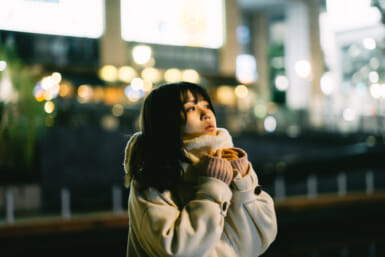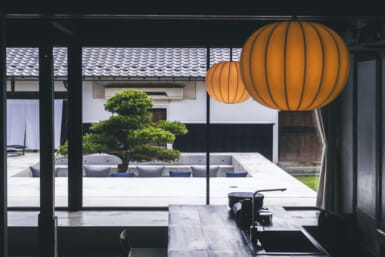by Elyse M. Rogers
TAKAGI SKIN CLINIC
I know many readers who complain that it’s difficult to follow the advice of a physician who doesn’t “practice what he/ she preaches.” You know the type of physician I mean—the one who is 25 pounds overweight and tells you that you need to go on a diet, or the medic who smokes up a storm and demands that you quit tobacco for your health.
Well, at least in the field of dermatology, I’ve got a great name for you. Ifs Dr. Chicko T. McKinstry who will give you good advice about avoiding wrinkles and keeping your skin clear and at the same time possesses skin that is flawless and healthy. I won’t disclose the doctor’s age, but if you visit her office, try to guess it; I get you’ll be under by about 10 years. (Then ask her—she’s not a bit shy about divulging her birth year.)
CHIEKO T. McKINSTRY
You might be wondering whether Dr. McKinstry is Japanese or foreign, but she is definitely Japanese and was raised in Japan and went to school here, graduating from Toho Women’s College of Medicine and Pharmacy. Medicine runs in the family with her father and brother both doctors. Her international bent runs in the family as well; her grandfather was a diplomat who served in Washington.
After her initial M.D. degree, Dr. McKinstry worked in private practice in Tokyo and then obtained her Ph. D. from Tokyo Women’s Medical College. You might be interested in her thesis title: “Histological Examination of Basic Hormonal Substances Applied to the Skin,” which dealt with the prevention of aging skin.
The good doctor spent seven years in the U.S., which accounts for her good English-speaking ability, and for many Western-type treatment techniques. Although she was in Los Angeles at White Memorial Hospital (the Seventh-day Adventist Hospital) for a year, then at the University of California where she met her husband, she spent most of her time at UCLA in postgraduate studies in theoretical and clinical dermatology.
It was when she returned to Japan in 1972 that she set up her own clinic, the Takagi Skin Clinic in Shibuya, where it is today. The name Takagi, by the way, is her maiden name.
She says she’s too busy with her clinical practice for much outside writing, but in the past she has written several books, contributed many articles to professional journals and even written pamphlets for her patients on cosmetic surgery and other treatments she performs.
CLINIC LAY-OUT AND EQUIPMENT
I’ve mentioned in the past that I’m amazed at how much Tokyo physicians fit into small amounts of space and Dr. McKinstry’s clinic is no exception. The clinic consists of a waiting room, a receptionist area, two tiny treatment rooms and one larger room which is the main operating room area. Because of the cramped quarters, the instrument sterilizer churns away in the waiting room and extra stationery supplies act as an informal wall decoration as you go out the door. In one of the small treatment rooms is a desk for the doctor, her only “office.”
Still, the place is rather cozy and doesn’t seem unusually crowded. While I was there, a patient was being prepared for surgery behind I screen in the main operating room and didn’t seem to mind the action buzzing around outside.
Since the office is on the third floor, it’s an easy walk-up if you prefer the exercise, but there’s an elevator too. Outside the clinic, on the sidewalk, a sign indicates the clinic entrance is both Japanese and romaji, making it easy to find (once you get close).
DERMATOLOGY PROBLEMS
Patients come to the dermatologist for a wide range of problems. Some of her patients’ more common problems are listed below:
• Acne. Many teenagers (and even young adults) have acne, which includes black-heads, whiteheads, pustules and sometimes deeper blemishes or cysts. The goal is to prevent permanent pitting or scarring from the acne process. Scrupulous cleansing of the skin and hair are helpful, as are medicines the doctor prescribed, I was surprised to learn, however, that the newest medications used in the U.S.—Retina A and Acutane—are not available in Japan.
• Skin cancer. Skin cancer is on the rise and is a reason that brings many patients to the clinic. The doctor reminds us that any unusual change in a wart or mole, or new growth on the skin, should be seen by a physician. She also suggests (you’ve heard it lots of times before, I know) we all watch exposure to the sun, especially during the hot summer months.
She says people who live in Tokyo really don’t have to worry too much about the sun because there are many rainy limes and the summer is quite short. But that doesn’t go for those who like to toast themselves on the beach or spread-eagle themselves on rooftop gardens.
• Unwanted hair growth. When hair appears in unwanted areas (for example, on the face in women) it can be removed permanently by a process known as electrolysis. During this process an electric current is passed through a needle, turning local body fluids into instant acids which neutralize the growing capacity of that area the needle touches. In the past, regrowth of hair could occur but Dr. McKinstry has improved and refined the usual technique (she calls it the “McKinstry Technique”) and has had “virtually complete success with it.”
• Hair restoration. Yes, preventing baldness or slowing down the process “may be possible” according to the doctor. She has a special program and special shampoos to aid in this work.
• Cosmetic surgery. Although not a major part of her practice, the doctor does cosmetic surgery and has written a pamphlet about the different types of surgery (facelifts, skin-planing for acne scars, nose reshaping, etc.) and what the patient might expect from those procedures.
• Hyper hydrolysis. While I was in the office, a woman was being prepared for this surgery and I thought it fascinating. Hyper hydrolysis is the removal of the sweat glands under the arm. Seems the Japanese are very self-conscious about perspiration and some of them get really emotionally upset if they feel they perspire a lot.
While Americans take extra showers and wear deodorant, most Japanese don’t want to do that, according to Dr. McKinstry. They may get so upset about their perspiration problem that they can’t function in school or on the job. So, the doctor removes the underarm sweat glands in a 30-minute procedure in the office and her patients “become very happy,” as she describes it.
The loss of those sweat glands isn’t a problem, according to the doctor, because the body just sweats more in other areas. Only a tiny, one-inch (2 cm.) incision is made under each arm, which heals within a week and leaves almost no scar, according to Dr. McKinstry.
CREAMS AND LOTIONS
As if all the different types of patient treatments were not enough, Dr. McKinstry also makes her own special aging cream that she will give to patients on request. She also gives samples of other types of creams and lotions and has worked with cosmetic companies on special products. She recommends ROC cosmetics as being hypo-allergic and tests her own products gradually so that patients are sure not to get skin reactions from them.
LOCATION, HOURS, PARKING, ETC.
Dr. McKinstry welcomes foreigners and currently about 10 to 20 percent of her private patients are foreigners. Her staff of three speaks “some English,” according to the doctor, but she’s always willing to help, even with phone calls requesting appointments. She laughingly suggests the caller say “gaijin desu,” to alert the receptionist so they’ll call the doctor to speak English.
Many of you have probably been within a stone’s throw of Dr. McKinstry’s clinic without even knowing it, since the clinic is almost directly across the street from the Tokyu Hands store. It’s within walking distance of Shibuya Station, just up the street from Seibu Department Store. Several buses pass the door as well. If you have trouble getting around and reading Japanese signs, however, you should ask them to send you a map when you make an appointment.
Office hours are 9:30 a.m. to 6 p.m. Monday through Friday and 9:30 a.m. to 1 p.m. on Saturday. Appointments are preferred although the doctor will take walk-ins if she can squeeze them into her schedule.
There is no parking connected with the clinic but there is public parking beneath the bank a couple of buildings away. (Parking costs are ¥200 for 30 minutes.)
Fees are always varied, depending on the patient’s problem and how much time and treatment is needed, but an average consultation fee runs about ¥6,000. Other ballpark figures for procedures: mole removal ¥10,000-¥30,000 and biopsy ¥20,000. The doctor accepts Japanese national health insurance (kenko hoken) but only about 10 percent of her practice is related to procedures that are covered by insurance.
Takagi Skin Clinic, Kuken Bldg, 3F, 1-36 Udagawa-cho, Shibuya-ku, Tokyo 150. Phone 462-2807, www.takagiclinicjp.com.








